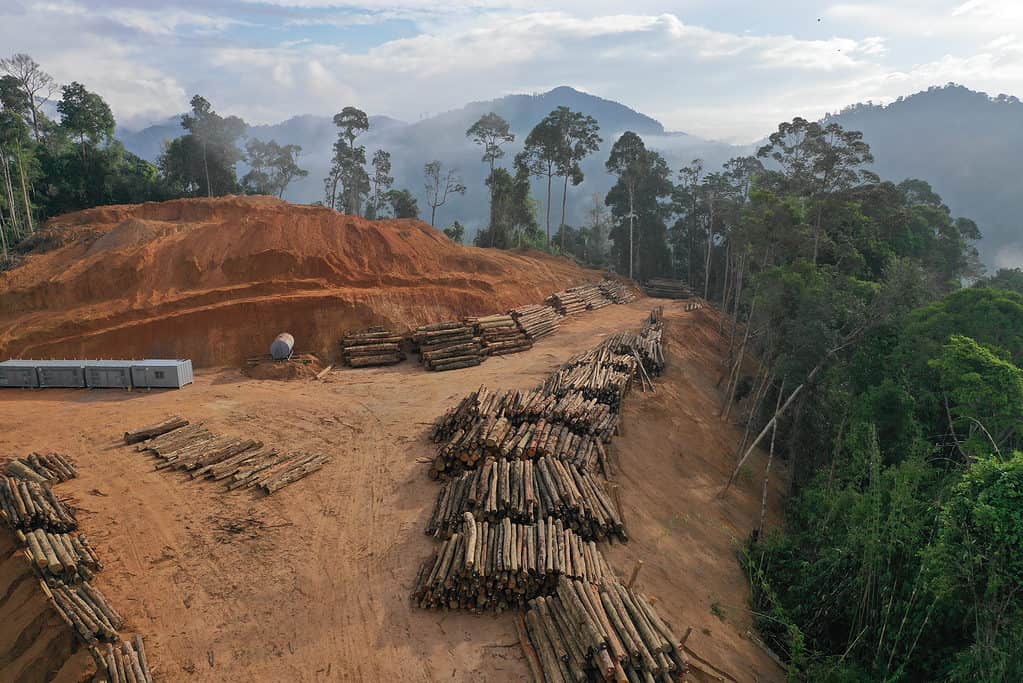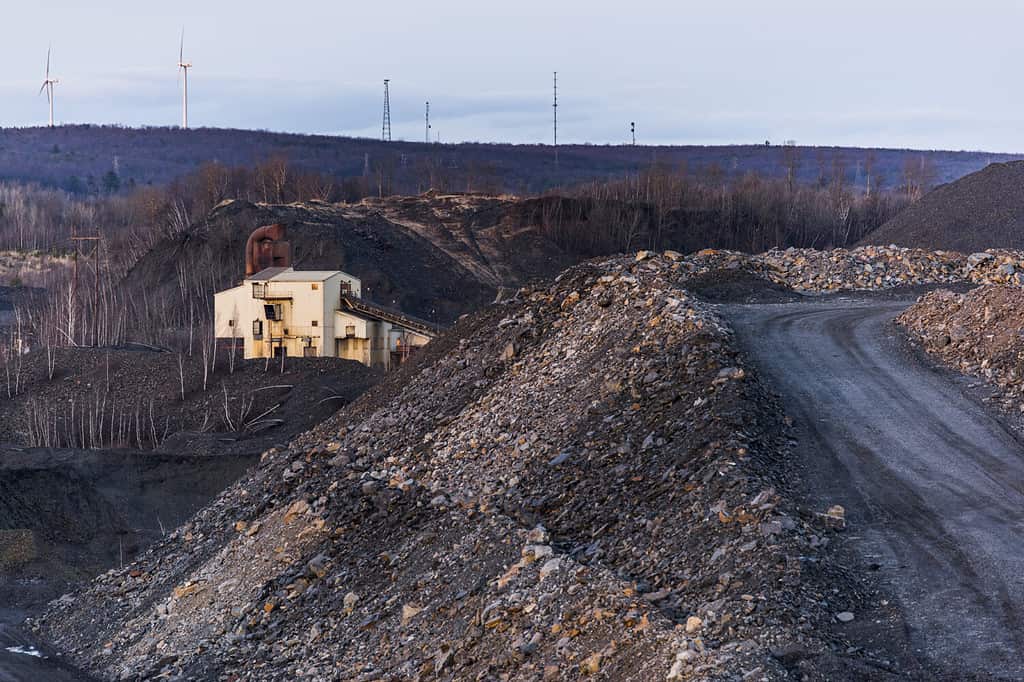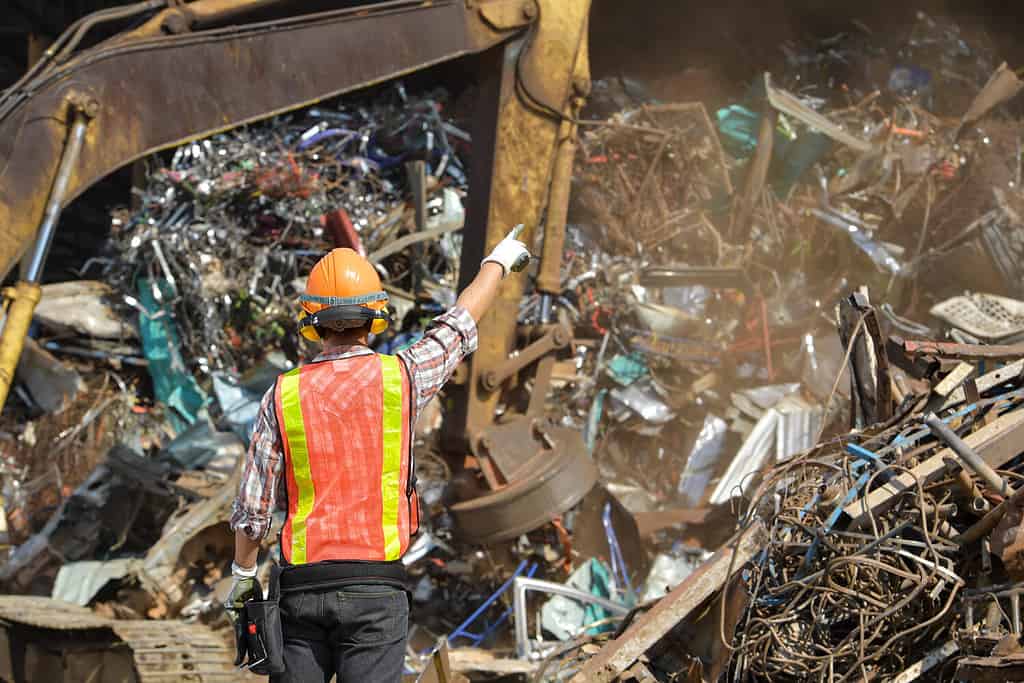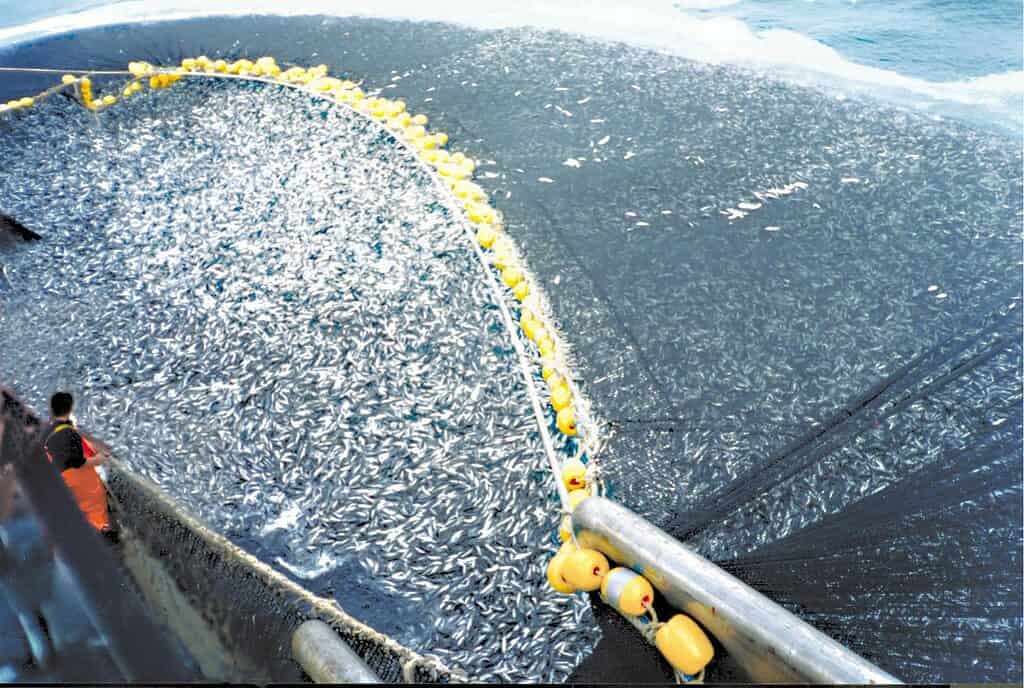Looking to make a career switch but want to make sure you stay away from dangerous jobs? Well, we are here to help! There are lots of jobs out there, but not all of them are equally safe. Today, we are going to take a look at the most dangerous jobs in the world. We will also examine some of the data available on job fatalities and learn a bit about the issues with calling something “the most dangerous job in the world” without the proper data behind it. Let’s get started!
The Most Dangerous Job in the World

Logging is generally cited as the most dangerous job in the world.
©Rich Carey/Shutterstock.com
The most dangerous job in the world (with verifiable data to back it up) is logging, with a fatality rate of 135.9 out of 100,000.
Logging is one of the most dangerous jobs in the world, as it involves working with heavy machinery, felling trees, and extremely remote locations. Loggers have to cut down, transport, and process timber, often in harsh weather conditions and with little supervision.
According to the U.S. Bureau of Labor Statistics, logging workers had the highest fatality rate of any occupation in 2016, with 135.9 deaths per 100,000 workers. More recent statistics place the number closer to 70 deaths per 100,000, but the number is still extremely high. The main causes of death were contact with objects and equipment, transportation incidents, and falls.
Finding Data Outside of the United States

Mining materials like cobalt coal, especially on an international stage, are also extremely dangerous. There just isn’t enough data to make exact claims.
©The American Explorer/Shutterstock.com
While logging is almost unanimously listed on the internet as the most dangerous job in the world, only the U.S. has the data to back up the claim. The U.S. Bureau of Labor Statistics gathers data each year and provides reports, which are then used for articles pretty regularly. The only issue this concerns is there are plenty of jobs worldwide that have no reporting and, ultimately, no coverage.
With that in mind, it’s hard to look at logging as the most dangerous job in the world when we don’t know how other jobs would rank without the reporting. Instead, it’s probably safer to say that logging is one of the most dangerous jobs in the world.
For example, there are extremely high rates of death in cobalt mines in the DRC (Democratic Republic of Congo), with over 200,000 individual miners in the country, 40,000 of which are children.
Looking at another example, China has an extremely high number of worker-related deaths, but the exact data isn’t always released. Mining workers in China are often migrant workers who have few rights and protections. China has experienced many mining disasters recently. For instance, China had the Hegang coal mine in 2009, the Xiaojiawan coal mine in 2012, and the Gyama mine in 2013. China accounts for 80 percent of the world’s coal mining fatalities; therefore, its death rate per coal output is much higher than in other countries. The government has tried to improve safety regulations and rescue facilities, but it still faces criticism for covering up accidents and allowing illegal mines to operate.
Mining is one of the most dangerous jobs in the world, but it may not get as much attention as logging because of the lack of reliable data and reporting, especially on the international stage.
Job Danger While Off-Duty

It’s important to remember that a job-related fatality is only one metric when looking at the safety of a job. The military is a great example of that.
©English: D. Myles Cullen / Public domain – Original / License
While the military may seem like a dangerous place to work, it actually has lower mortality rates than the average worker in the U.S. When paired with the suicide rate of 45.9 per 100,000, the data shows that job risk as a data point alone may not always be accurate for overall job danger.
People in the military are among the workers who face the highest risk of death on the job, as they have to deal with wars, conflicts, attacks, injuries, and other hazards. The U.S. Department of Defense breaks down fatalities into “hostile deaths” and “non-hostile deaths”. The hostile deaths occurred mainly in Afghanistan, Iraq, and Syria, while accidents, illnesses, and suicide caused non-hostile deaths. The fatality rate for active-duty military personnel was 1.3 per 100,000 in 2021, which is lower than the national average of 3.6 per 100,000 for all workers.
According to a study by the Department of Veterans Affairs, veterans have a higher mortality rate than non-veterans, especially among younger age groups. The study found a suicide rate of 45.9 per 100,000 in 2017 among veterans aged 18 to 34, which is astounding.
Occupational Data from the Most Recent U.S. Bureau of Labor Report

Worker data for the U.S. is always changing, although the past few years have been an anomaly, according to reports.
©Sakura Image Inc/Shutterstock.com
The U.S. Bureau of Labor Statistics released the latest data on fatal injuries in 2021, revealing some pretty scary trends and statistics. The report shows there were 5,190 fatal events recorded in 2021, a figure up 8.9 percent from the previous year. The fatal injury rate was 3.6 deaths per 100,000, the highest since 2016. Some of the key findings from the report were:
- Black or African American worker fatalities reached record highs in 2021. The number went from 11.4 percent of total fatalities in 2020 to 12.6 percent of total fatalities in 2021.
- Workers in transportation (as well as material movement) occupations experienced a high of 1,523 fatal work injuries in 2021. They were the occupational group with the highest outright number of fatalities.
- Exposure to harmful substances or environments led to 798 worker fatalities in 2021, the highest figure since recording began in 2011. Accidental overdose from the unintended use of drugs or alcohol accounted for 58.1 percent of these fatalities.
It’s always interesting (and important) to look at the key information highlighted in reports like these. They often show the need for more safety measures to help protect workers. That being said, the trend for worker safety has generally gone up (fewer work-related deaths) in the population as a whole, which is a good thing.
The Top 5 Most Dangerous Jobs in the World

Commercial fishing is another job that is extremely dangerous, according to the data.
©C. Ortiz Rojas, Public domain, via Wikimedia Commons – Original / License
- Logging workers: They have to deal with heavy machinery, huge trees that will eventually fall, and bad weather conditions, often in remote environments. They had the highest fatality rate of any occupation in 2019, with 68.9 deaths per 100,000 workers.
- Fishing workers: While on a fishing boat, these workers often face bad weather, open seas, heavy equipment, and other dangers. They had the second-highest fatality rate of any occupation in 2019, with 145 deaths per 100,000 workers.
- Aircraft pilots and flight engineers: Aircraft workers must fly and navigate airplanes, helicopters, and other aircraft in various conditions. They had the third-highest fatality rate of any occupation in 2019, with 40.7 deaths per 100,000 workers.
- Roofers: A roofer faces dangers while working on top of houses and buildings, generally on slippery surfaces and with dangerous materials. They had the fourth-highest fatality rate of any occupation in 2019, with 54 deaths per 100,000 workers.
- Iron and steel workers: They have to build and install huge structures made of heavy material, often at scary heights. They had the fifth-highest fatality rate of any occupation in 2019, with 29.8 deaths per 100,000 workers.
The photo featured at the top of this post is © Jason Patrick Ross/Shutterstock.com
Thank you for reading! Have some feedback for us? Contact the AZ Animals editorial team.







